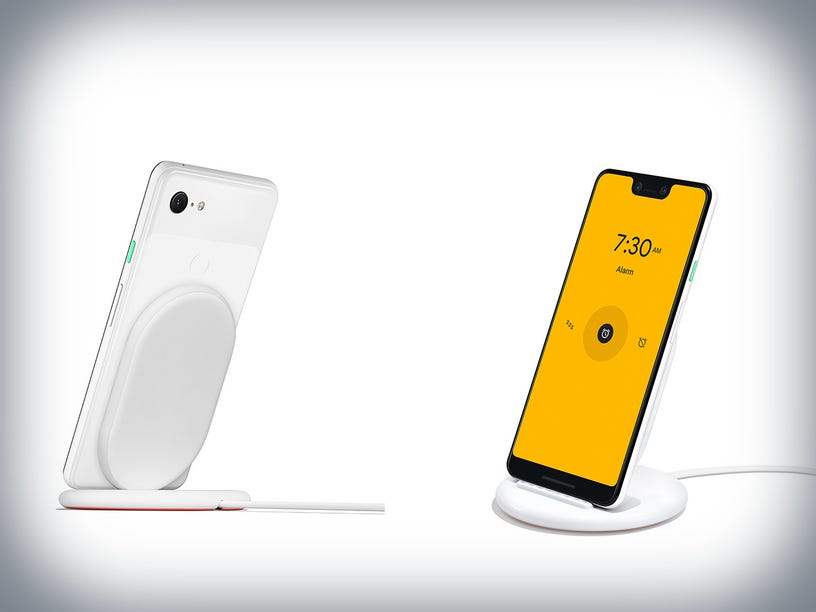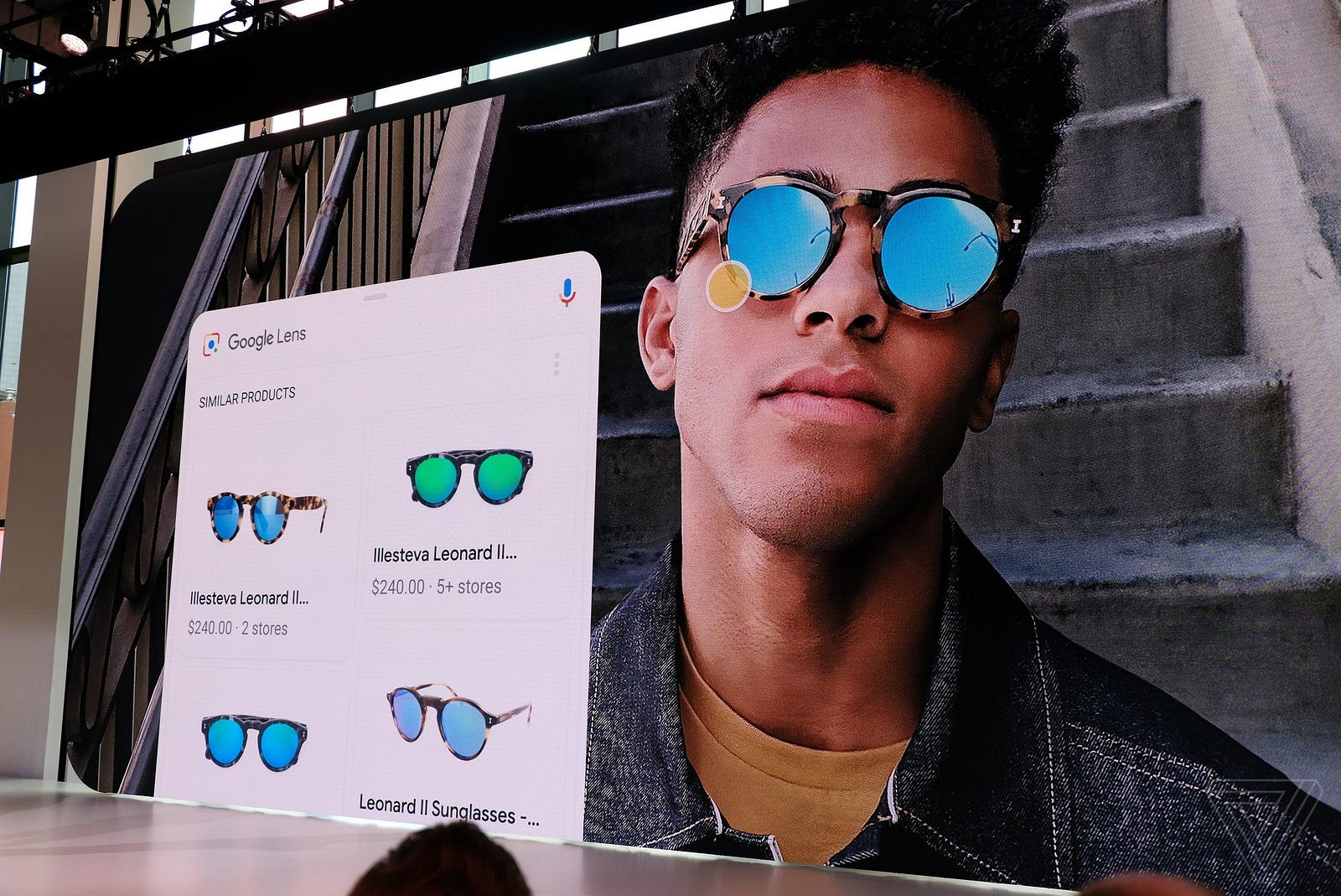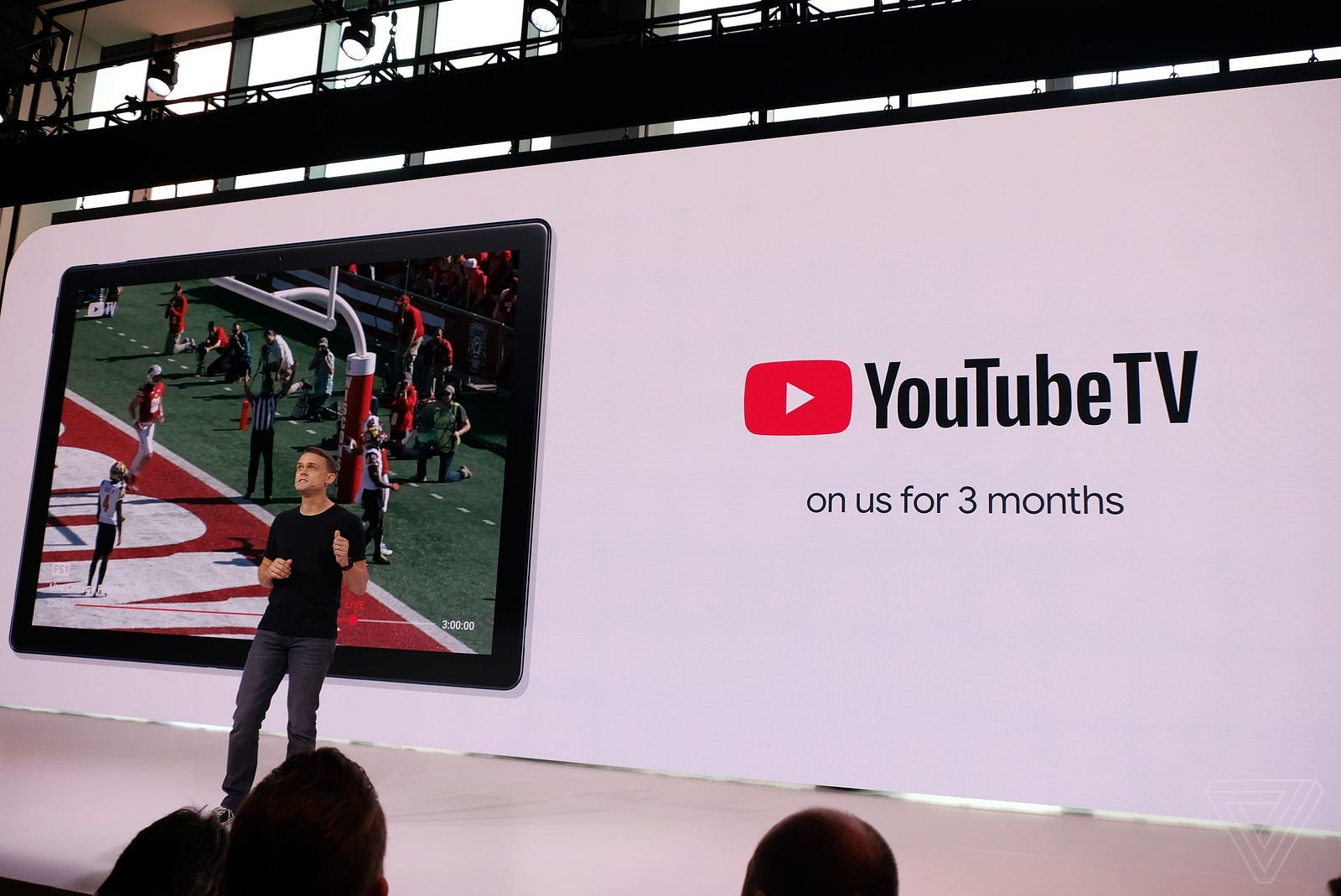Five Interesting Things We Learned From Google’s 2018 Hardware Event
On Tuesday, Google unveiled a series of new hardware products at a “Made by Google” event hosted in NYC. A lot of the new products had been leaked last week, especially the Pixel 3 smartphones, so the event packed few surprises. That being said, Google’s announcements reveal a number of interesting things about the way the search giant approaches mobile and the smart home. Here is a roundup of the most interesting things we observed from this event.


Pixel Stand Blurs The Line Between Mobile And Smart Home
Given that this was a Pixel launch event, Google dutifully spent a big portion of its keynote presentation introducing the Pixel 3 phones as well as the Pixel Slate, a new ChromeOS-powered tablet. Both come with some state-of-the-art hardware specs but don’t necessarily push any boundary in terms of innovative features. However, Google did announce an intriguing new product called Pixel Stand that seems to reinvent what kind of roles a mobile device can play in the burgeoning smart home space.
Retailing for $79, the Pixel Stand is functionally a wireless charging stand that will work with any smartphone that supports the Qi wireless charging standard (the same one that Apple uses). However, when charging the new Pixel phones, it will activate a special user interface that transforms the stationary phone into a smart clock that users can interact via Google Assistant. Designed to be a bedside alarm clock, the stand would turn on the “Do Not Disturb” mode when docked in at night to ensure minimal distraction. Thanks to the presence of Google Assistant, however, it essentially leverages the Pixel phone’s computing powers into creating a voice-activated smart home experience.
This product showcases an interesting vision where the future of the smart home experience could be powered by mobile devices via charging stations or speaker docks. So far, the smart home experience has been powered by dedicated connected home devices, in particular smart speakers. But the phone that we carry around with us all day doesn’t just suddenly disappear when we get home, and there is certainly a case to be made about unifying the home and out-of-home experience with one single device for the sake of consistency and continuity.
As phones get bigger and wearable devices such as the Apple Watch continue to mature into competent standalone gadgets, perhaps soon we could take a more hands-off approach to our smartphones when we are at home. The biggest hurdle in realizing that dual modes, however, lies in creating a voice-driven UI that can transform the touchscreen-driven UI of the smartphone into something suitable for the smart home experience. And that seems to be exactly what Google did with the Pixel Stand as it promises to blur the line between mobile and smart home devices.
It’s worth noting that Google isn’t alone in envisioning this kind of fluid application of smartphones in smart home. Earlier this summer, Amazon released a special charging dock for its Fire tablets that automatically switches any docked tablet into “Show Mode,” which provides users with a hands-free Alexa experience a la Echo Show, which Amazon just updated with a whole new design two weeks ago. The smart home ecosystem has so far been largely voice-driven, and bringing mobile screens into the mix could be an effective way to convince consumers that the display is important to the connected home experience.


Google Releases Home Hub To Take On Echo Show
Speaking of Echo Show, Google is also getting in on the smart display space with Google Home Hub. With a compact 7-inch touchscreen, this new addition to the Google Home lineup promises to bring better smart home control to Google households. It comes with a neat, clean dashboard called Home View for controlling all your smart home devices by room or by device. It provides a simple, user-friendly interface that shows you the specific capabilities of each smart home device. Home View is also available via the new Google Home app, furthering pointing to Google’s intention to bring mobile into the smart home environment.
Home Hub runs on an expanded version of Google Cast, which Google now refers to as Assistant OS. It is the same interface used on the Lenovo Smart Display, the previous bestseller in the “Google Assistant-powered smart display” category. It is unclear whether Google will extend the new Cast-based OS to smart TVs embedded with Google Cast, but the opportunity is certainly there for Google to push this Assistant OS cross devices. For now, Google was able to work in some nice features that benefit from controlling the entire hardware-software stack. For example, Ambient EQ is a new feature that automatically adjusts the display of Home Hub to the light and hue in the room to make the display look more natural.
It is also worth noting that, unlike the Echo Show or Facebook’s new Portal video chat displays, Google choose not to put a camera on the Home Hub, presumably to sidestep the growing privacy concerns among consumers. In fact, Google put a physical mute switch on the back to completely turn off the Home Hub’s ability to listen in. So the Home Hub won’t be supporting video calls via Google Hangout, but it will work with compatible Nest doorbell cameras to let you see who is at the front door. At the end of the day, Google knows its biggest strength is in providing information, and it has plenty of other avenues to collect data without resorting to putting a camera in your house.
Ultimately, the Google Home product is only as smart as Google Assistant, and sadly there was no major updates announced for the digital assistant. Google did announce that Google Duplex, the impressive AI feature that enables Google Assistant to call restaurants and businesses on your behalf to book reservations or appointments in near-perfect human speech, will start rolling out to Pixel devices over the following month. No word on when they would be coming to the Google Home lineup yet. In addition, Google also announced that the Assistant will be able to screen your incoming calls to filter out the spam calls for Pixel users. This could solve a real problem that frustrate many smartphone users, and may win some good will for Duplex.


Cameras Get Smarter As Google Lens Continues Slow Rollout
Beyond the new Google Assistant features coming to the new Pixel phones, Google also spent some time emphasizing how intelligent the phone’s cameras are, going as far as calling it “the world’s best camera.” Resisting the trend of dual rear cameras, Google chose to stick with a single rear 12.2-megapixel camera for the new Pixel phones. However, both models will have two front-facing cameras. This will allow the phones to take in a wider field of view for including more people in your group selfies.
Beyond technical upgrades, Google is applying its AI smarts to create a cutting-edge camera experience powered by machine learning that goes beyond simply taking good photos and videos. A new Top Shot option will automatically select the best image from a series of burst shots, weeding out the blurry shots or ones where someone blinked. Super Res Zoom promises a sharper focus without optimal zoom by taking multiple frames and AI adjustment. Photobooth uses facial recognition to automatically snap selfies when you smile or “make a funny face.” There is also a new Night Shot mode that promises great low-light photography.
In addition to these cool AI-enhanced camera tricks, Google is also integrating Google Lens, its visual search tool, directly into the camera of Pixel phone. Thanks to the new Pixel Core chip, Google says Lens will work instantly in the camera and doesn’t need a data connection for many processing tasks. You can now point Lens at sunglasses and shoes to find them online and find similar styles. Google says it is working to expand this shoppable Lens function to other product categories.
Google Lens has had a rather slow roll out. First announced during Google I/O 2017, the visual search tool took almost a year to roll out to all Android and iOS phones via Google Photos in March. But Google Photos proved to be too full of friction for users, so Google soon made Lens accessible on certain Android flagship phones through Google Assistant too, although that list remained rather limited. While integrating Google Lens directly into the new Pixel phone will no doubt greatly increase the accessibility, Pixel’s limited sales number likely won’t do much to help scale the adoption of this visual search feature.
Visual search is a powerful tool for learning about unknown subjects thanks to the nonverbal nature of object recognition technologies, therefore placing its main focus on discovery rather than convenient access to information and updates on known subjects. Amazon is reportedly teaming up with Snapchat to test a visual search feature that links back to product pages on Amazon.com for purchases, and Pinterest is also making headway with its own visual search product. Facing intensifying competition, Google really needs to make it accessible on a wider range of devices beyond a handful of Android phones, should it like to hold on to its monopoly over search as more and more inquiries shift towards voice and visual searches.
Altogether, these camera-related updates further solidify the “camera-as-input” trend that we have been observing for the past year or so. Mobile camera is being transformed from a dumb viewfinder into an interface where an AI-powered software layer can unlock many new use cases and brand opportunities. Mobile AR is one such example, as Google’s new Marvel-themed AR animations and “Playmojis” can attest. For more on how your brand can leverage the camera and mobile AR to enhance your mobile experience, check out our recent post on this topic.


Various YouTube Service Trials Highlight Google’s Messy Content Strategy
Another interesting insight into Google’s YouTube strategy, or the lack thereof, can be gleaned from the various trials that Google bundled with its new hardware products. You’ll get three months of YouTube TV with a Pixel Slate or Pixelbook, 6 free months of YouTube Music if you buy one of the new Pixel 3 phones, and 6 free months of YouTube Premium if you purchase a Home Hub. It is perfectly understandable that Google is trying to match YouTube’s streaming services with various hardware products to ensure that, at least for the first couple of months, users can get the best experience of using those devices.
It makes sense that Google is targeting hardware Pixel and Google Home users, who are usually already dedicated Google users, that could be using YouTube subscriptions instead of other music and TV streaming services. Nevertheless, this confusing lineup of free-trial offerings reveals just how messy and incoherent Google’s current lineup of YouTube services are. The three different streaming services under the YouTube branding need to be consolidated or better positioned to communicate to consumers exactly what value they’d get from each subscription. As it stands, they only serve to confuse consumers.
Given how much of the connected home experience depends on the integration of hardware and services, it makes sense that Google would be leaning on its services (primarily Google Assistant and YouTube, but also its search, calendar, and shopping services) to sell its hardware products. This is particularly evident when Google handicapped the YouTube functionality of the Echo Show. But there are better things Google could have done to ensure that its customers get the best experience out of their products.
One such way that Google may want to look into is bundling the YouTube services with the hardware products on a monthly subscription plan. As more devices and services become covered under a monthly subscription, we are quickly approaching the age of the “super bundles” where services are not only bundled with each other to appeal to subscribers, but also with physical products. Similar to the Xbox All Access plan that Microsoft launched in August, which bundles new Xbox consoles with Xbox Live subscription for a monthly fee, Google could bundle the YouTube subscriptions (preferably a simplified one that combines all 3 existing services, or at least with delineations that better communicate the different value propositions between them to consumers) with their mobile and smart home services to ensure their customers are getting the best user experience they have to offer.
The Missing Pieces Reveal Google’s Realigned Priorities
It is also telling tonote the things that are missing from Google’s launch event this week. The real-time translating Pixel Buds smart earbuds that Google introduced last year with Pixel 2 are nowhere to be seen, getting no mention at all even as an accessory option for the new Pixel phones. Similarly, the ill-fated Google Clips AI camera seemed all but forgotten. The Daydream View mobile VR headset got an update at last year’s launch event, but was curiously absent this year.
Judging by its business model, Google is, after all, a services company that makes its profits by collecting data and selling ads. All the hardware products it launched this week are intended to help Google maintain consumer touchpoints, be it mobile or smart home, to ensure easy access to its services and ads. To that end, it makes total sense that things like Pixel Buds and Google Clips, both of which offer little advertising prospect, would be low-priority products that do not warrant yearly updates. The absence of a new Daydream View headset is indicative of the lagging adoption of VR in general and the shift of investment and interest towards AR.
Looking at the products that did make it on to the stage on Tuesday, it is clear that Google is doubling down on applying AI and machine learning on existing, proven devices. The Pixel Stand is perhaps the only real surprise here, but even that is essentially a bridge between two established product categories. (Home Hub is technically a new product for Google, but smart displays powered by Google Assistant are certainly not a new thing at this point.) Google tends to make hardware devices primarily as a reference device for third-party manufacturers, as is the case with Android devices, but with a realigned focus on smart home, it would seem that Google intends to get more serious with its hardware products. Part of Google’s motivations is to keep up with Amazon’s Alexa and defend its market share in search, but more importantly, it is about extending Google’s services into the home space.
